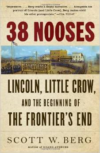Description
Situated within the area stretching from Georgian Bay in the north
to Lake Simcoe in the east (also known as Wendake)| the Wendat
Confederacy flourished for two hundred years.
By the mid-seventeenth
century| however| Wendat society was under attack.
Disease and warfare
plagued the community| culminating in a series of Iroquois assaults
that led to the dispersal of the Wendat people in 1649.
Yet the Wendat did not disappear| as many historians have maintained.
In “Dispersed but Not Destroyed| ” Kathryn Magee Labelle examines
the creation of a Wendat diaspora in the wake of the Iroquois attacks.
By focusing the historical lens on the dispersal and its aftermath| she
extends the seventeenth-century Wendat narrative.
In the latter half of
the century| Wendat leaders continued to appear at councils| trade
negotiations| and diplomatic ventures – including the Great Peace
of Montreal in 1701 – relying on established customs of
accountability and consensus.
Women also continued to assert their
authority during this time| guiding their communities toward paths of
cultural continuity and accommodation.
Through tactics such as this|
the power of the Wendat Confederacy and their unique identity was
maintained.
Turning the story of Wendat conquest on its head| this book
demonstrates the resiliency of the Wendat people and writes a new
chapter in North American history.
Kathryn Magee Labelle is an assistant professor in the
History Department at the University of Saskatchewan.






Reviews
There are no reviews yet.